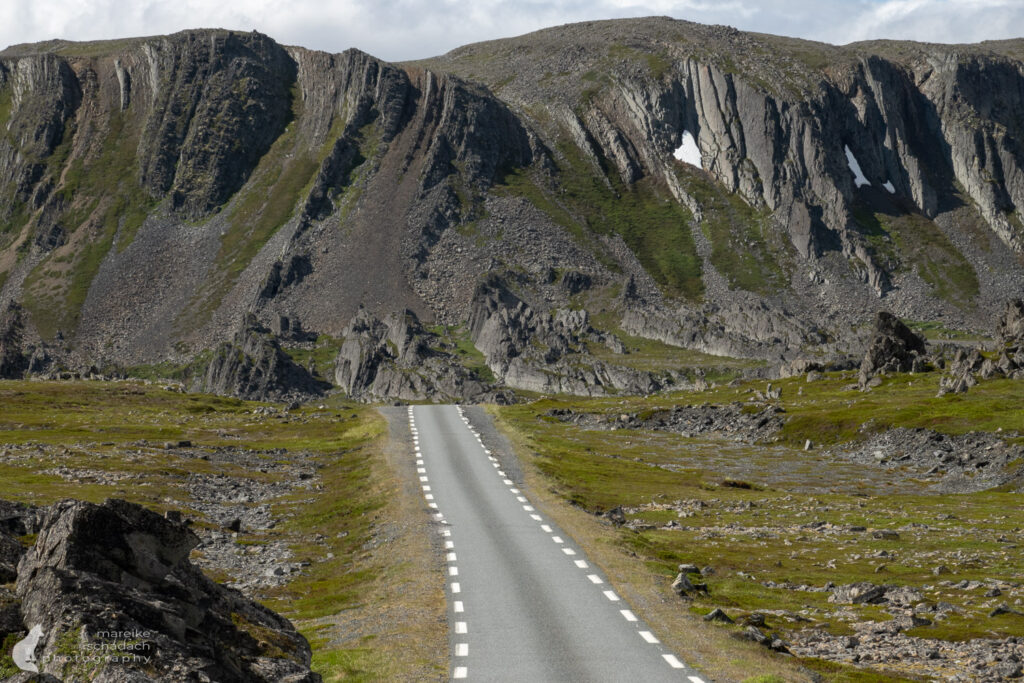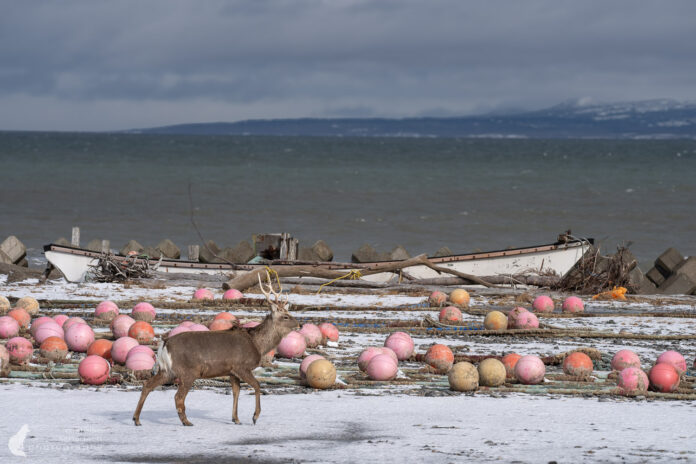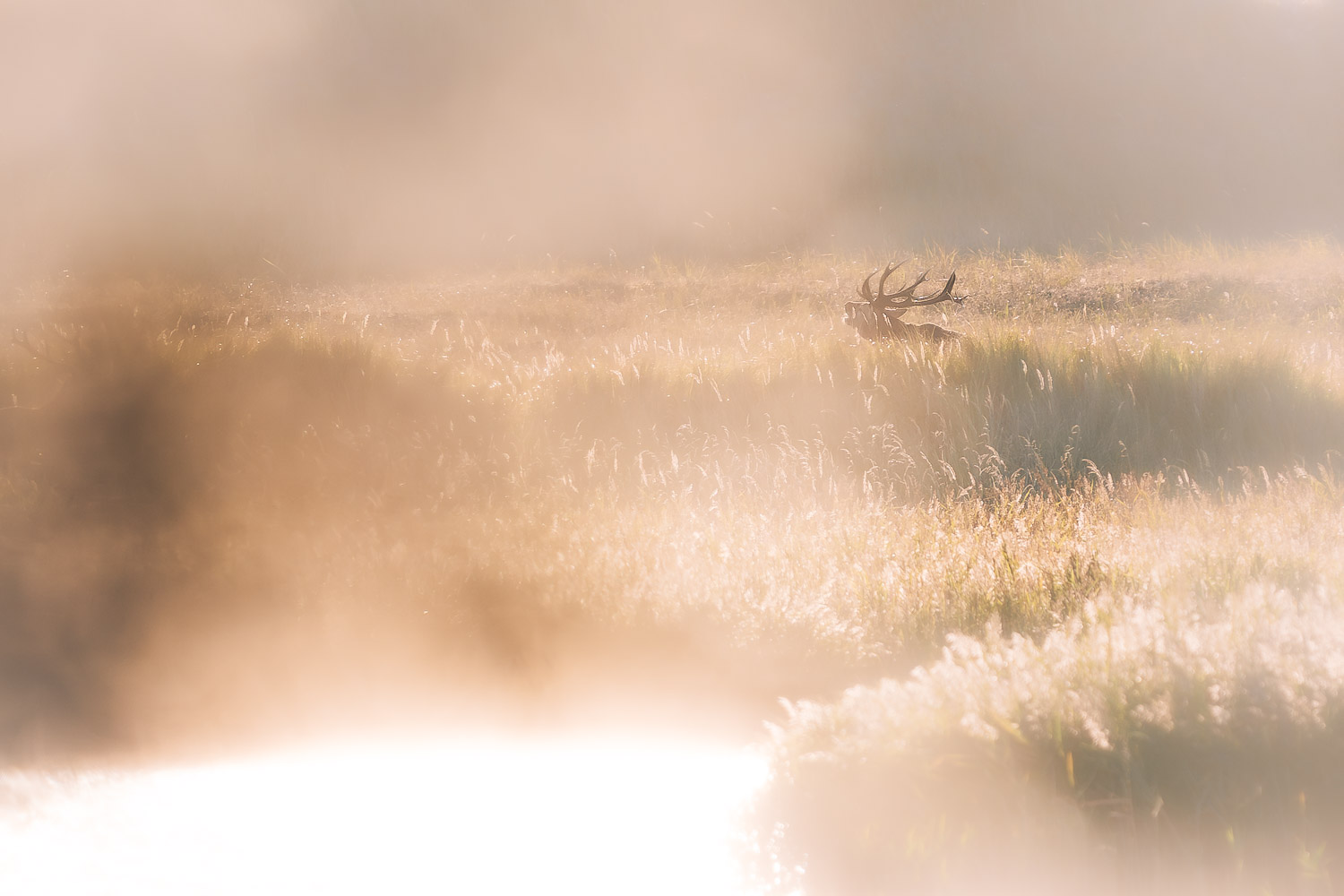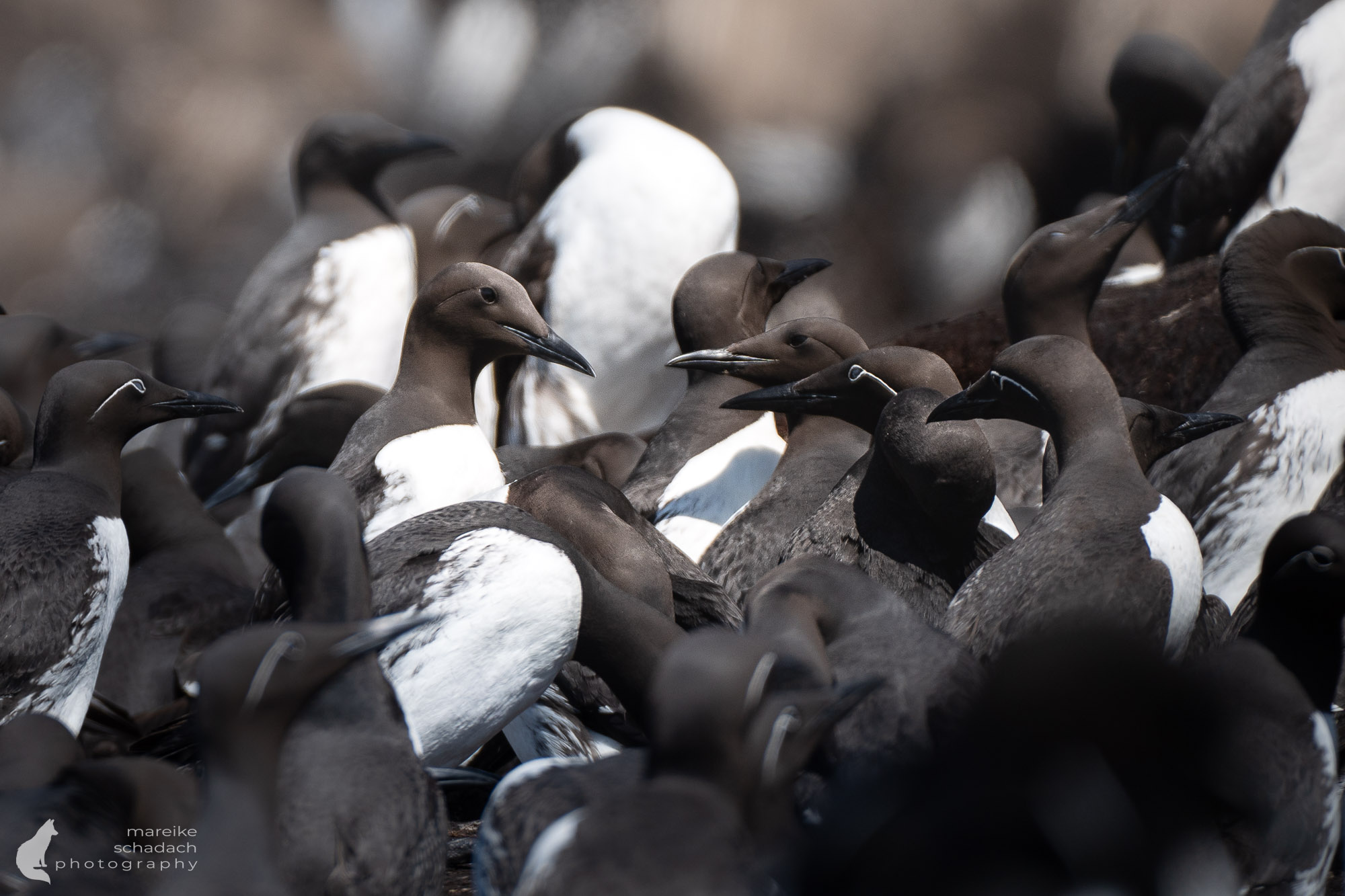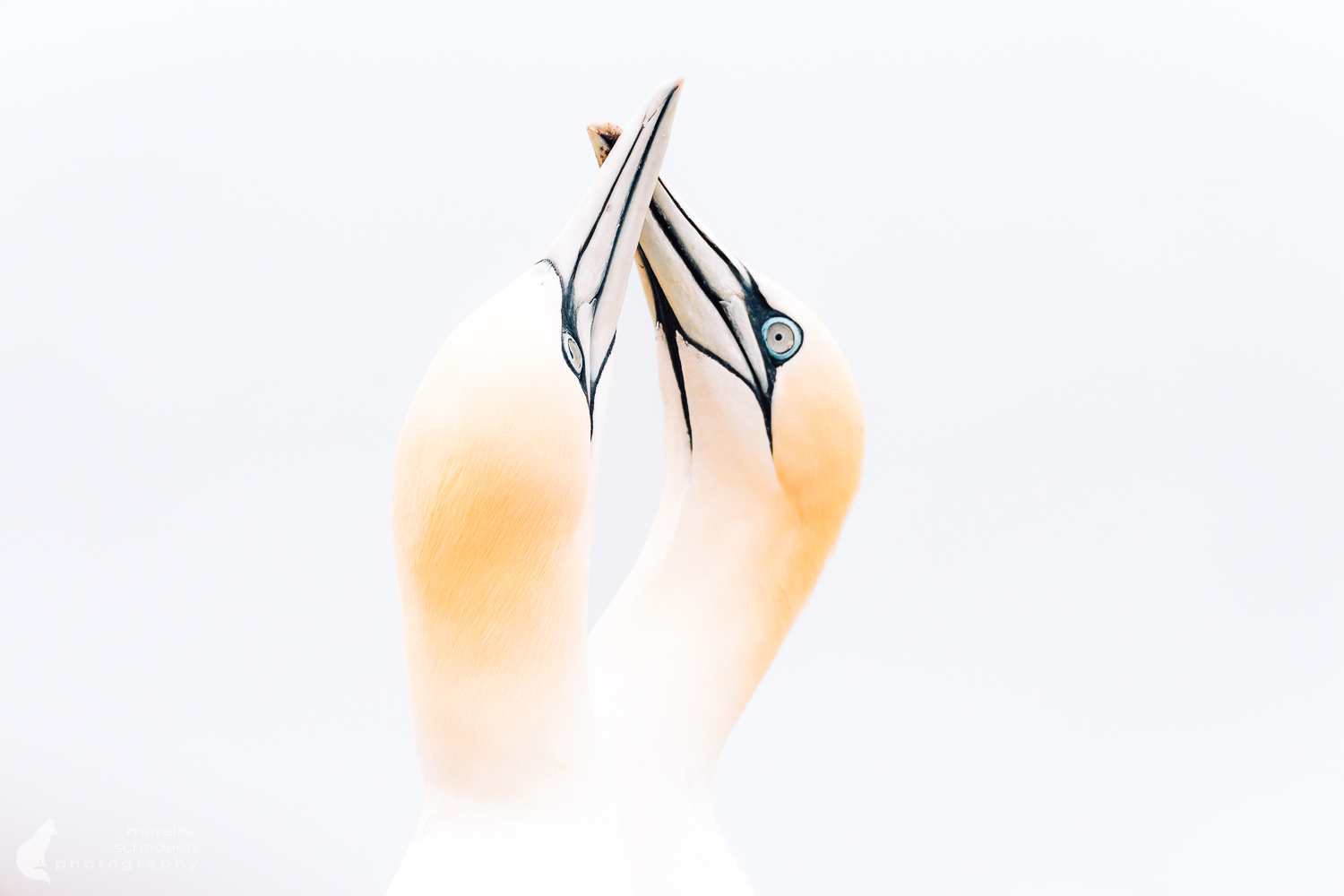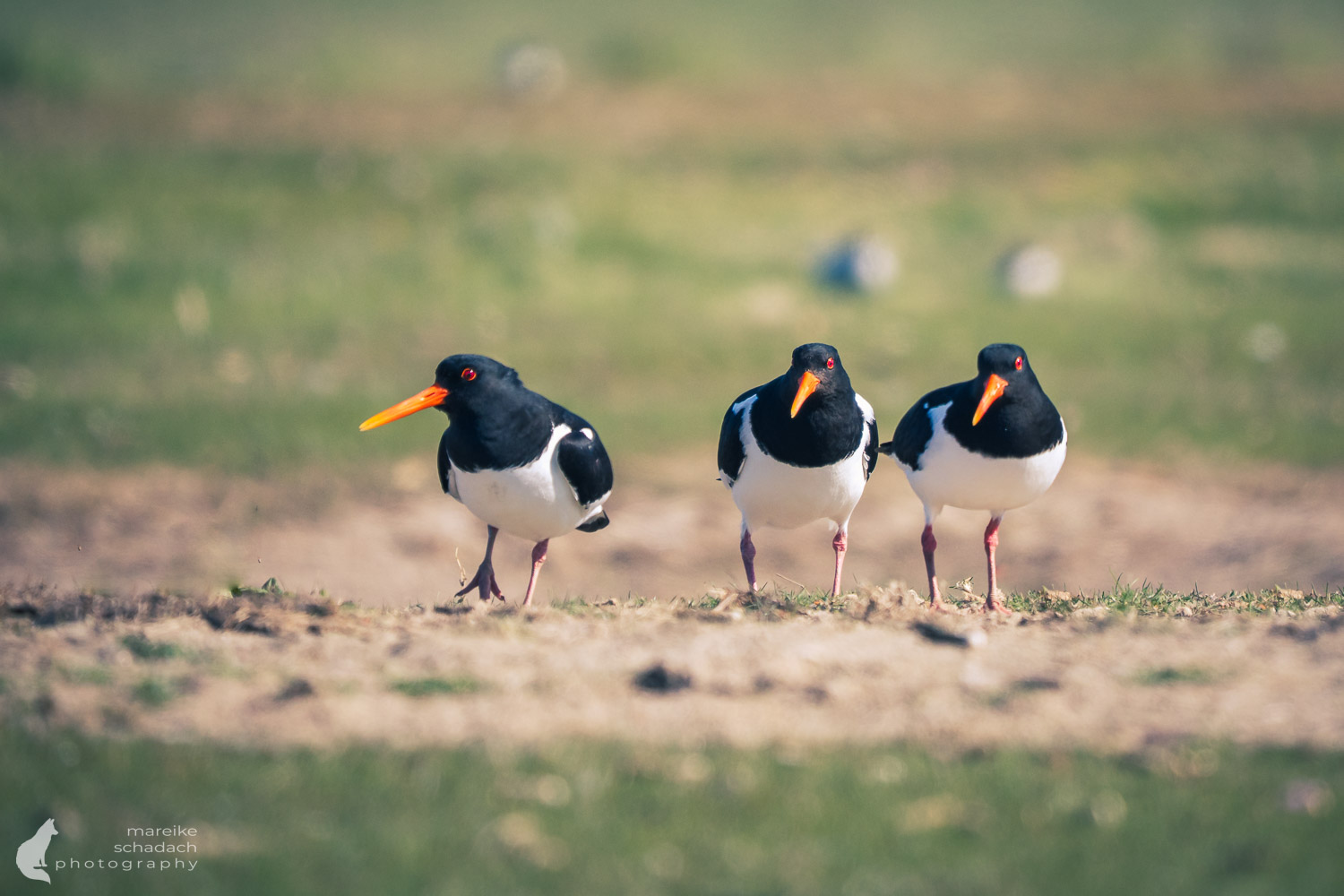Hokkaido, Japan. Off the beaten tourist track, the Notsuke Peninsula has many surprises in store, especially in winter. The wildlife encounters and views of the mountains of Shiretoko National Park and the Kuril Islands in particular make the peninsula a worthwhile destination for nature lovers and photographers. Here you will find out what you can see on the island in winter. You'll also get lots of practical tips for planning your trip.
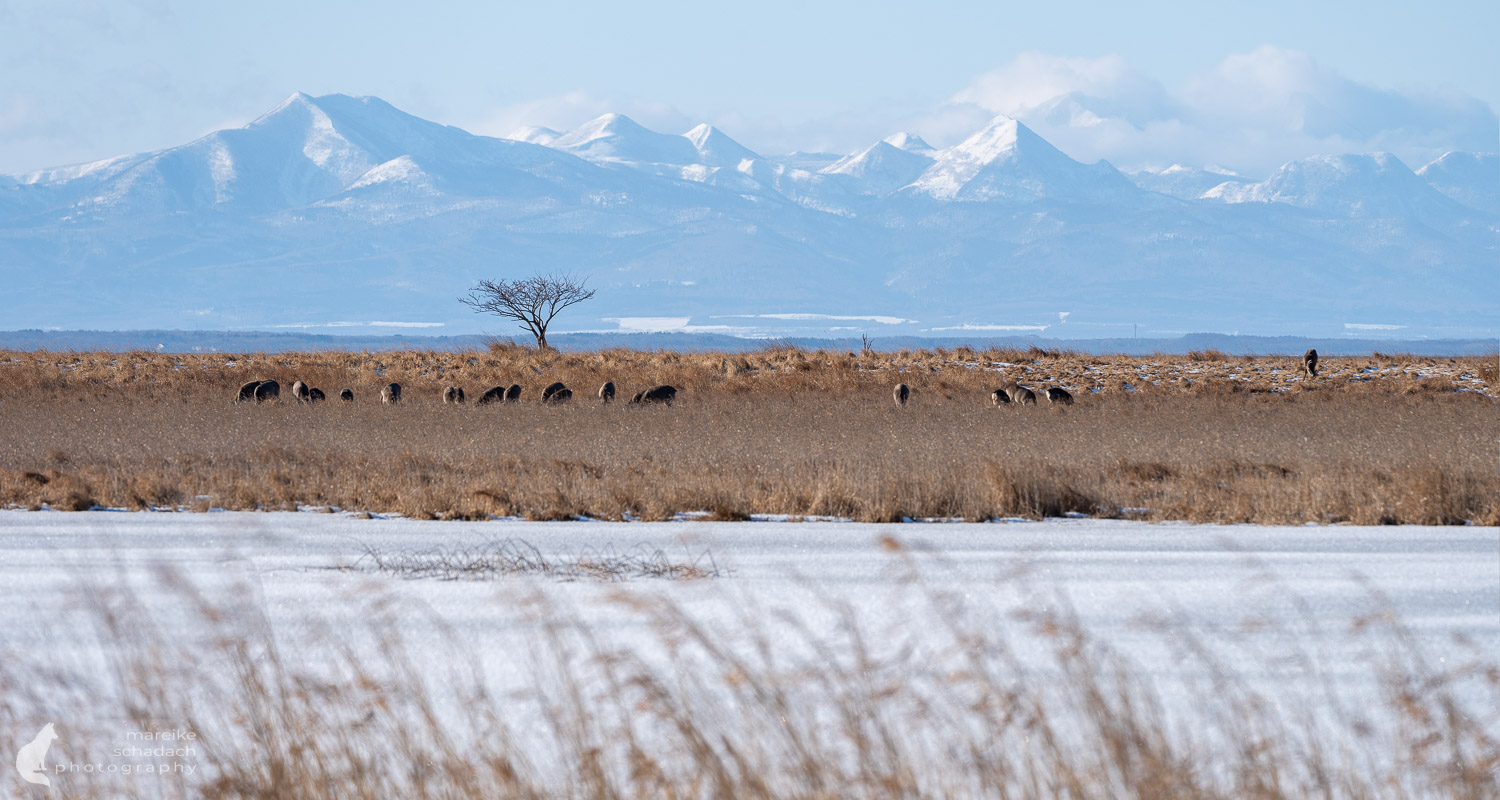
Unassigned, unpaid advertising. The article contains affiliate links.
Winter on the Notsuke Peninsula
The Notsuke Peninsula is Japan's largest sand spit. It protrudes into the Nemuro Strait as a 26 km long, hook-shaped strip on the eastern edge of Hokkaido. The headland is surrounded by a shallow bay on one side and the rough Sea of Okhotsk on the other.
The narrow strip of land offers a unique ecosystem and an equally interesting landscape of submerged forests, and in winter, frozen wetlands and sea ice. Along its entire length, the Notsuke Peninsula offers breathtaking views of the Shiretoko Mountains and Kunashir Island, which is the first island of the Kuril Islands.
The peninsula is characterized by vast salt marshes, swamps and a landscape dominated by sand dunes. Depending on the season, the area presents a different face, making every trip an unforgettable experience. I visited Hokkaido in winter. Then the peninsula is transformed into a breathtakingly beautiful snowy landscape. The shallow waters of the bay are then largely frozen and a vast white horizon of ice opens up, sometimes melting into the sky. In late February, the drift ice penetrates as far as Notsuke Bay, creating a rare and spectacular view. Unfortunately, I was there a little too early and didn't see any drift ice.
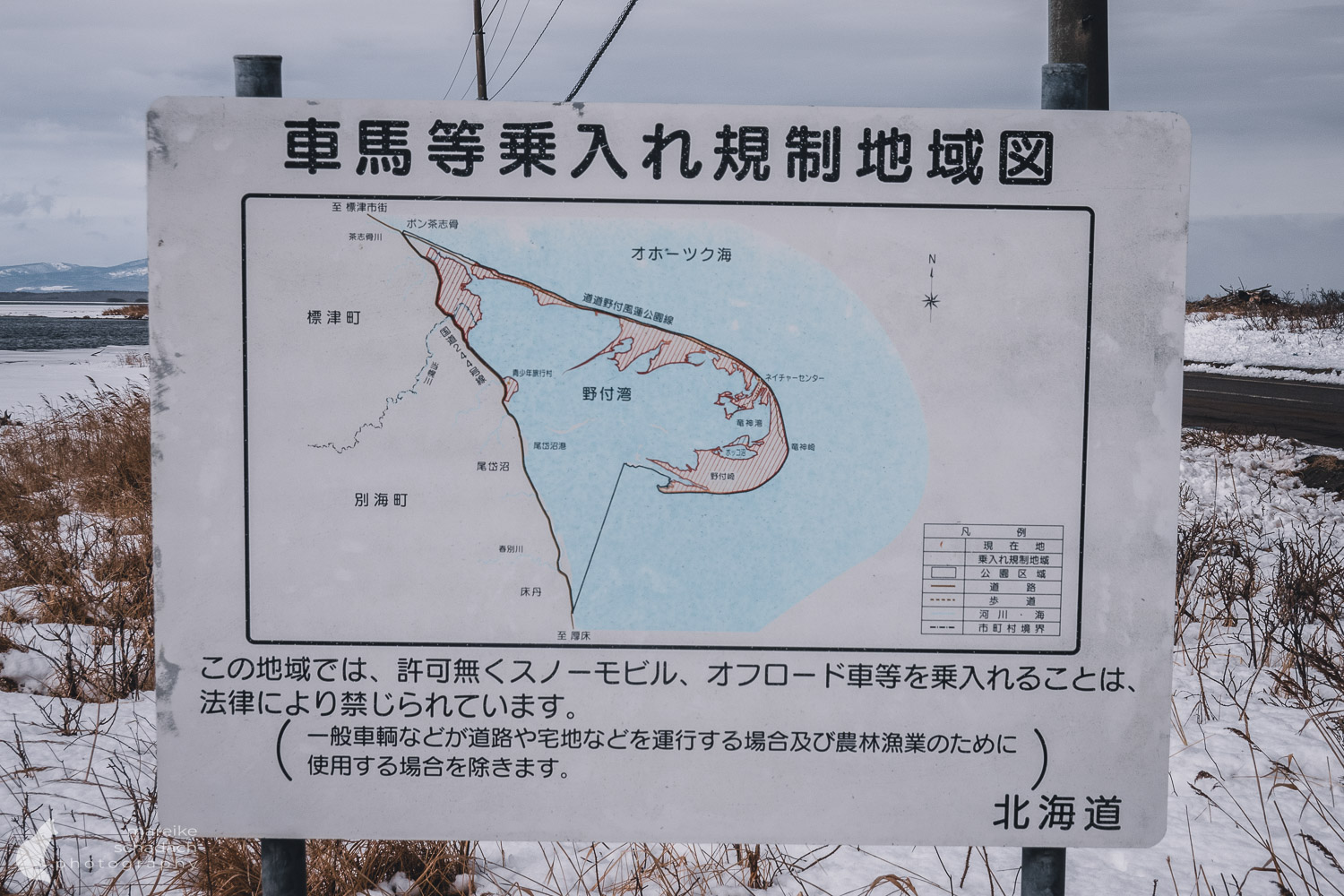
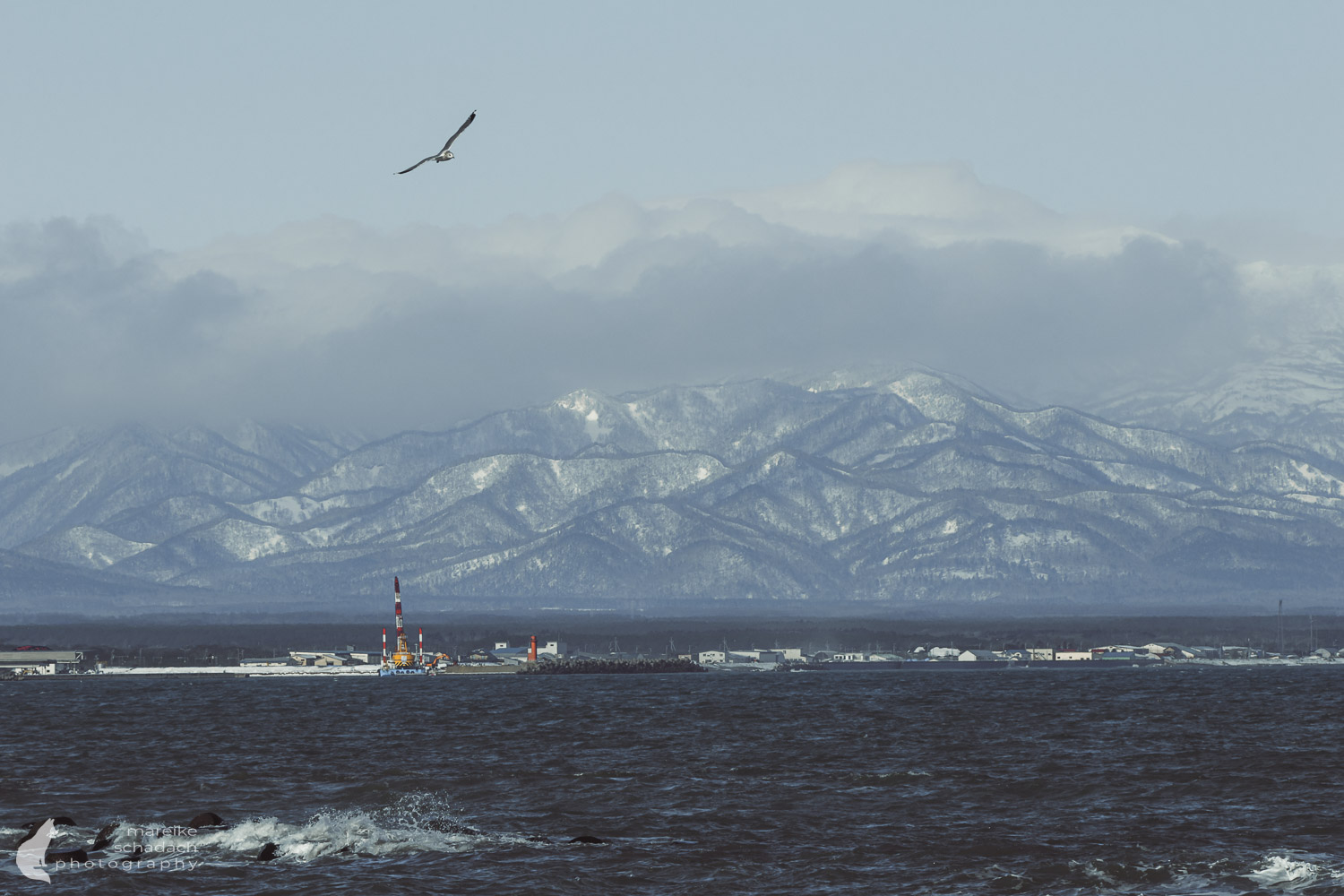
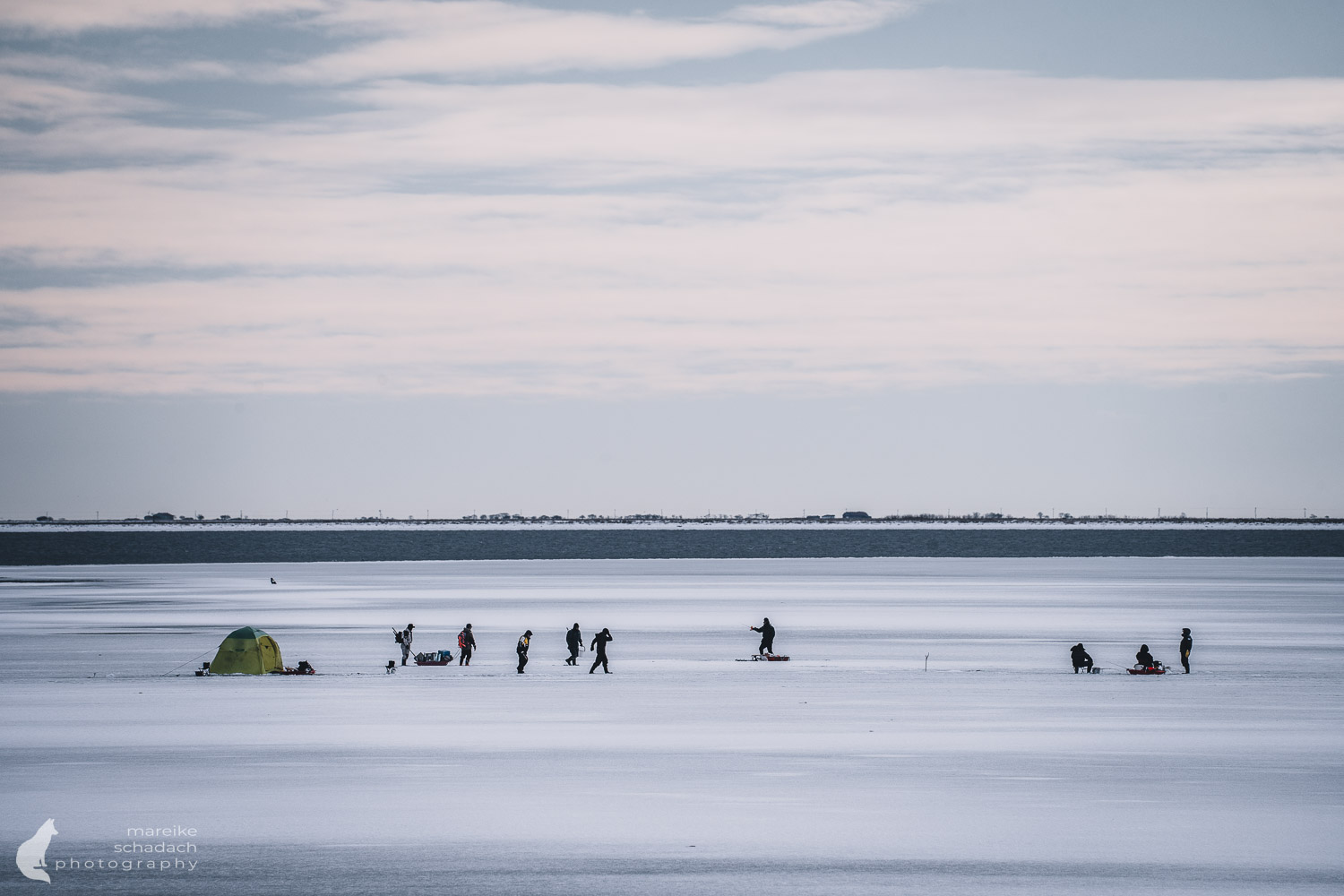
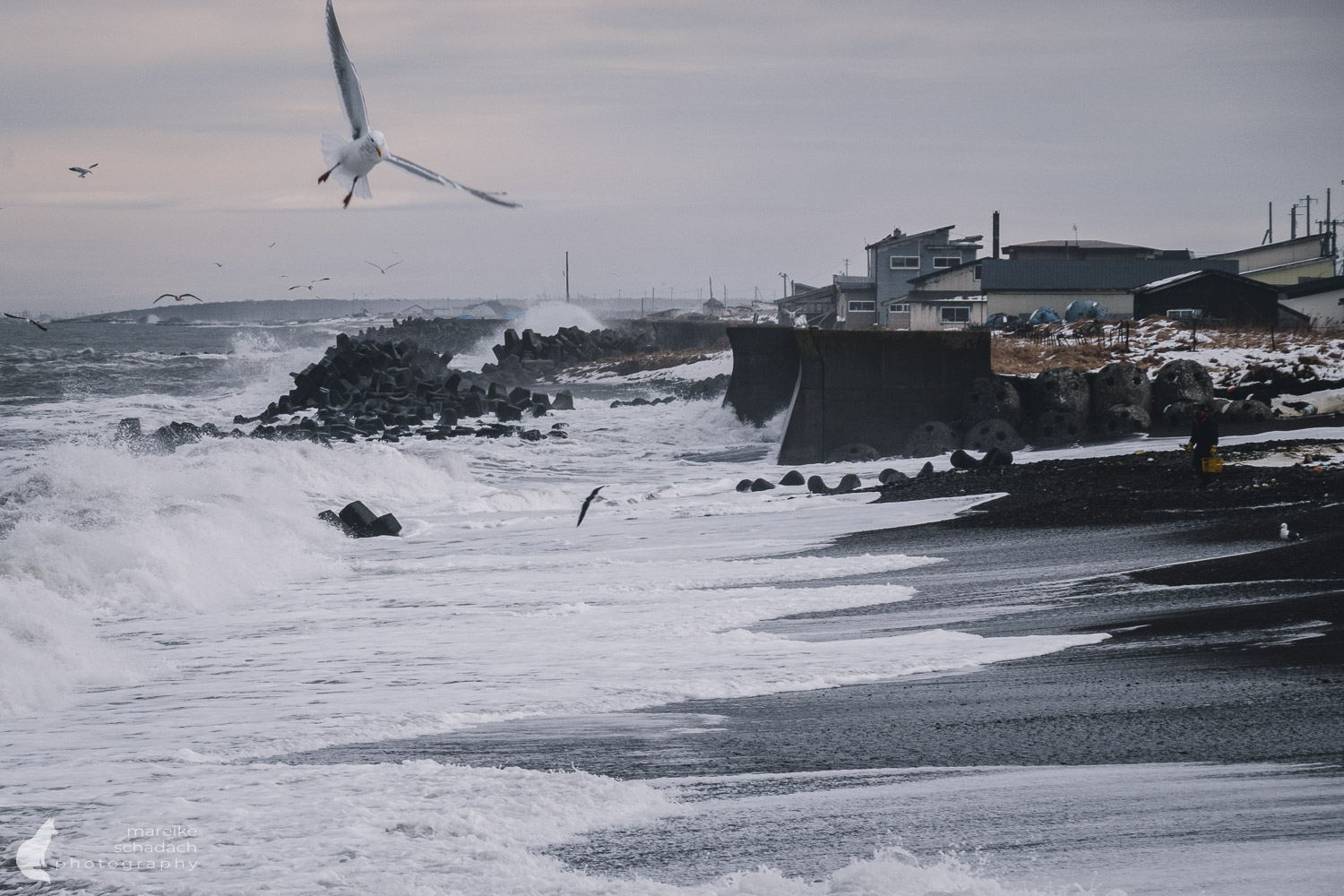
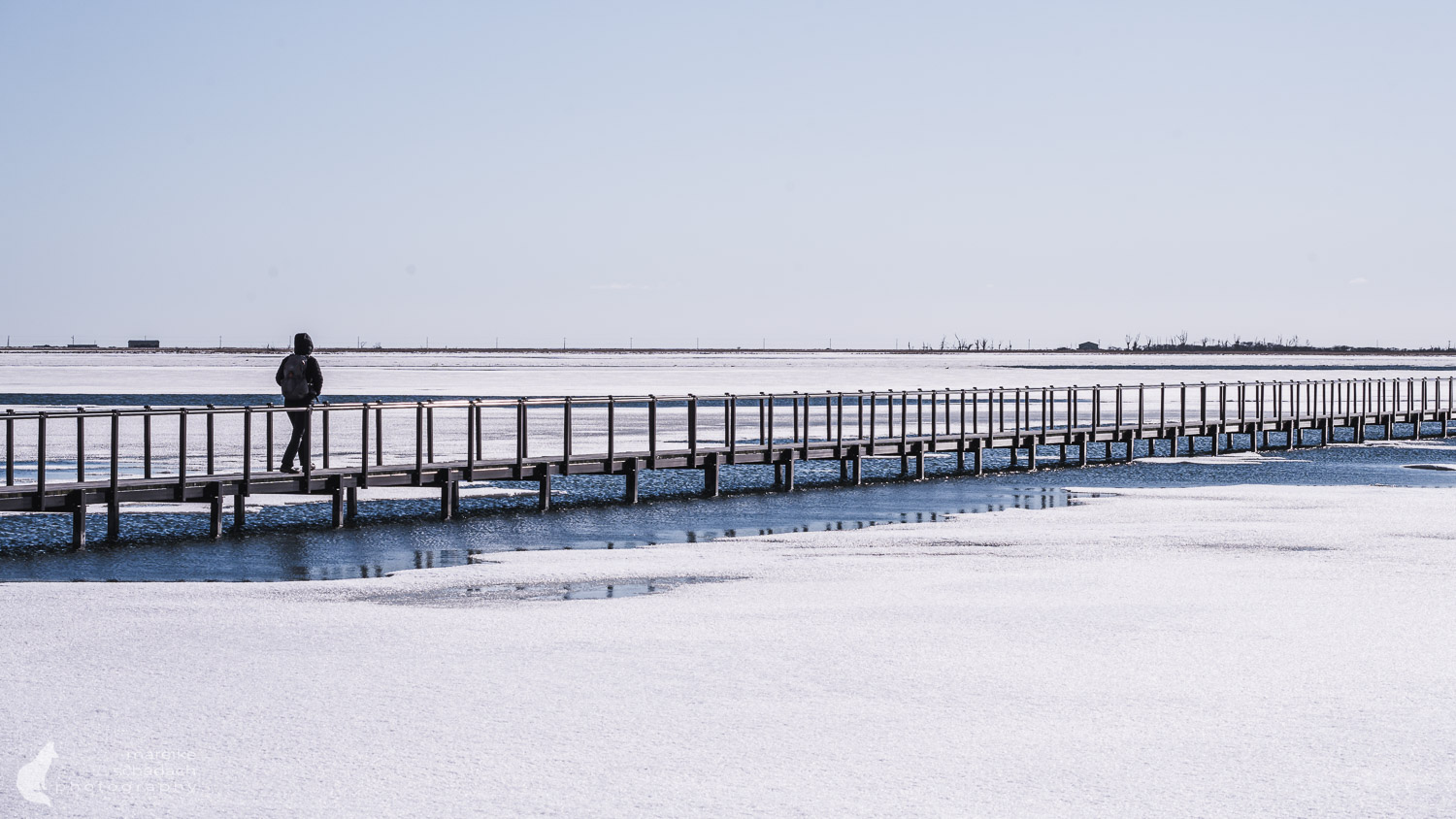
Highlights of the Notsuke Peninsula in Hokkaido in Winter
Notsuke Nature Center
A visit to the Notsuke Peninsula also includes a stop at the Notsuke Peninsula Nature Center. It is located around 15 km from the base of the peninsula and offers information about the unique ecology of the region. There are exhibitions about the flora and fauna as well as guided tours, in winter with snowshoes. There is a restaurant to cater for small or large appetites, and if you like, you can buy a souvenir or two. The Notsuke Peninsula Nature Center also offers various nature tours. These are usually in Japanese. However, tours can also be offered in English on request.
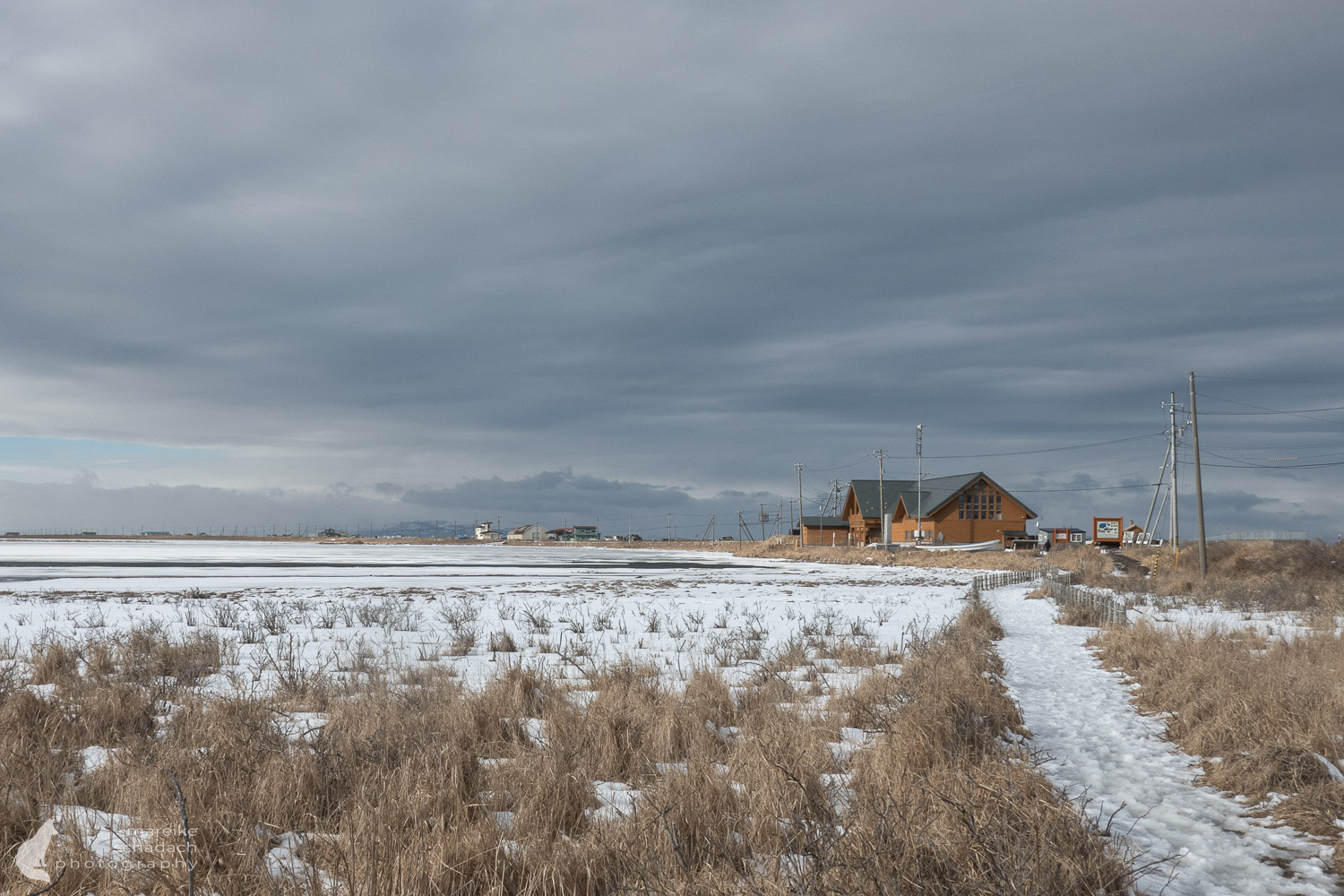
Wildlife on the Notsuke Peninsula in Winter
The place is a paradise for birds. Even in winter, numerous gulls and sea ducks such as the harlequin duck or shellente can be observed here. However, the east of Hokkaido is famous for its giant sea eagles, which can be seen here regularly. With a bit of luck, you may also encounter the Manchurian crane here.
In winter, when the grass is not so high, sika deer can be observed particularly well. They move around in groups, especially in the rear part of the peninsula, and often stay right by the roadside. The deer are particularly active at dusk. Foxes can also occasionally be seen on the Notsuke Peninsula.
The waters around the peninsula also provide a habitat for seals and the occasional dolphin. Boat trips to the peninsula can be taken from the nearby fishing village of Odaito in summer.
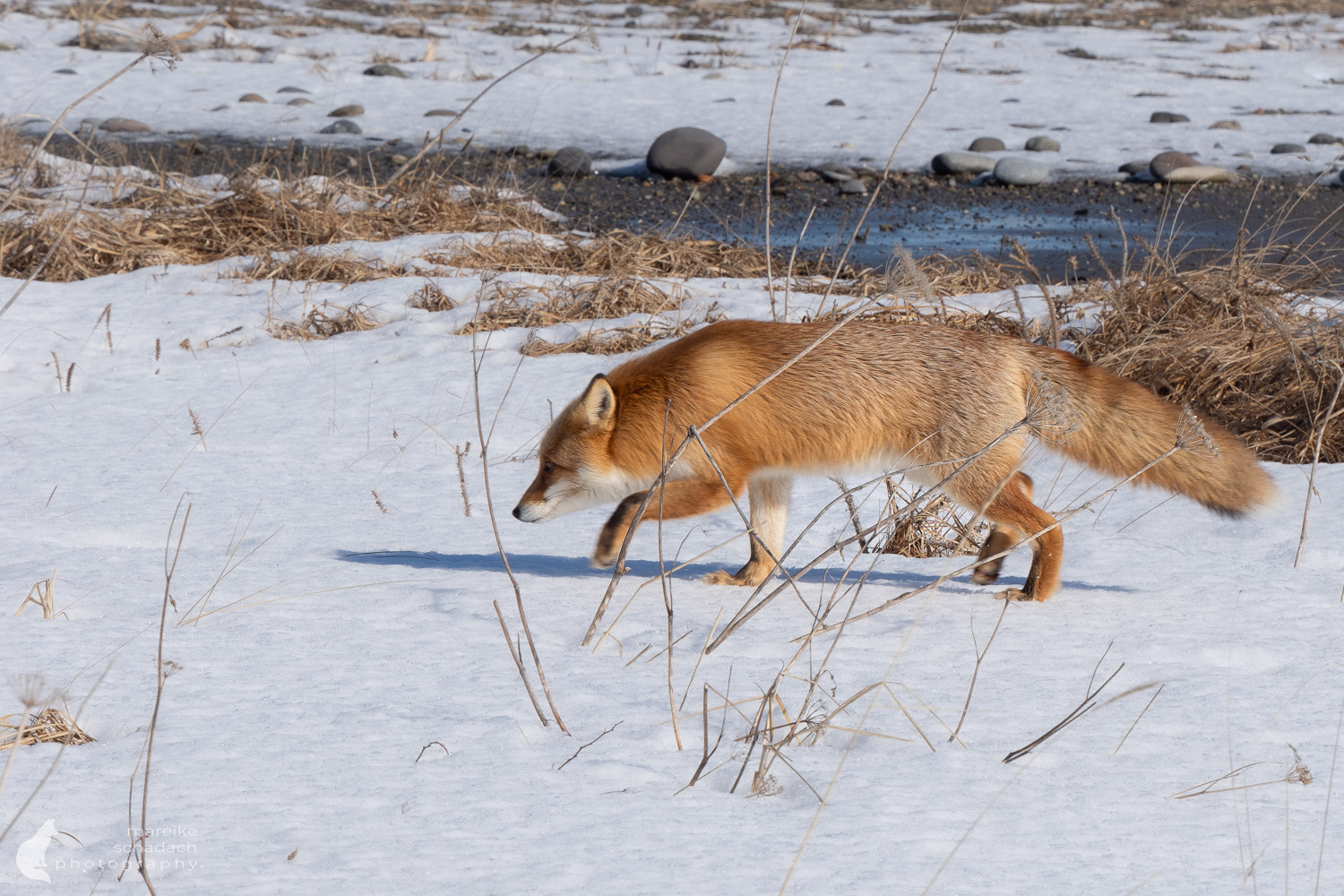
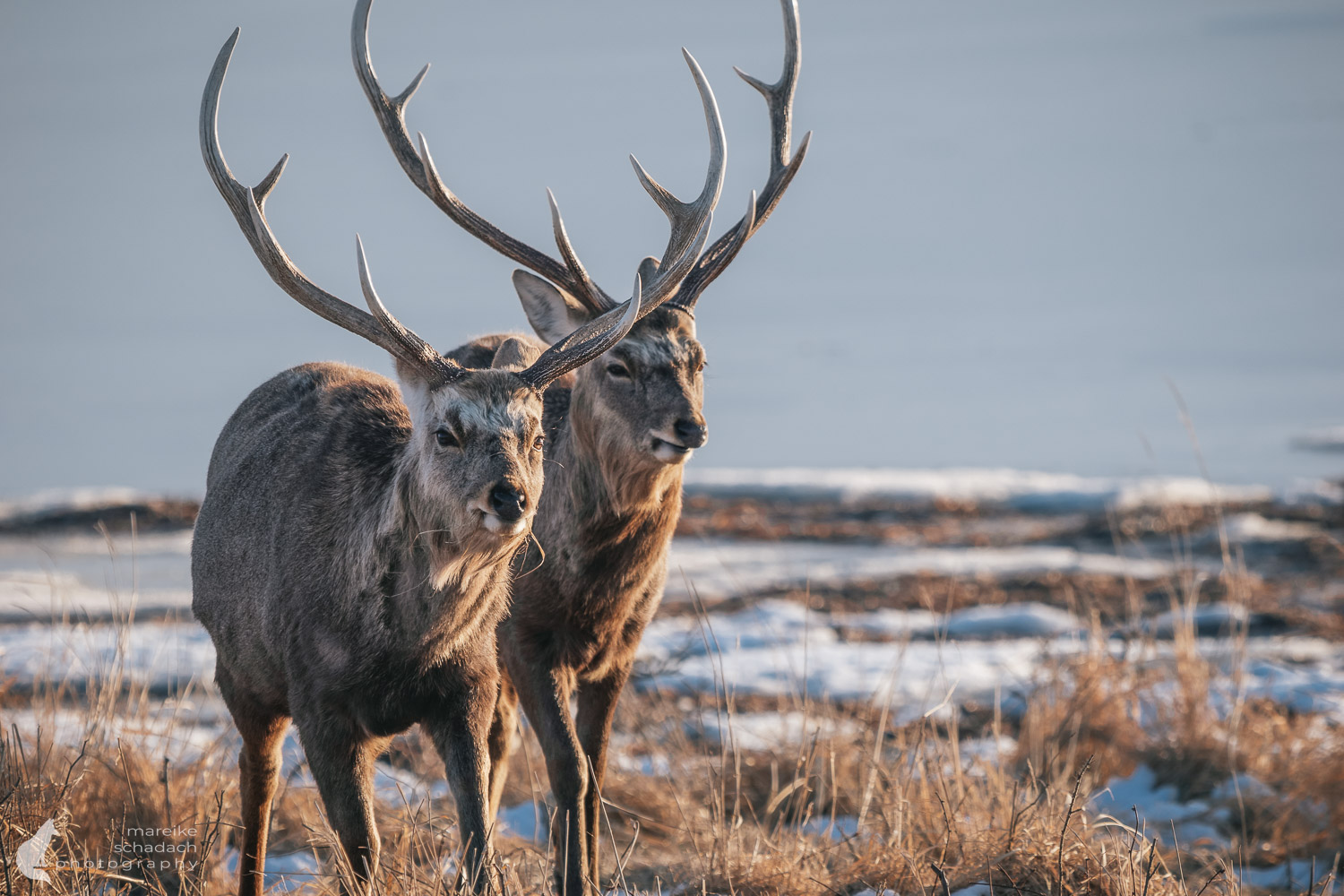
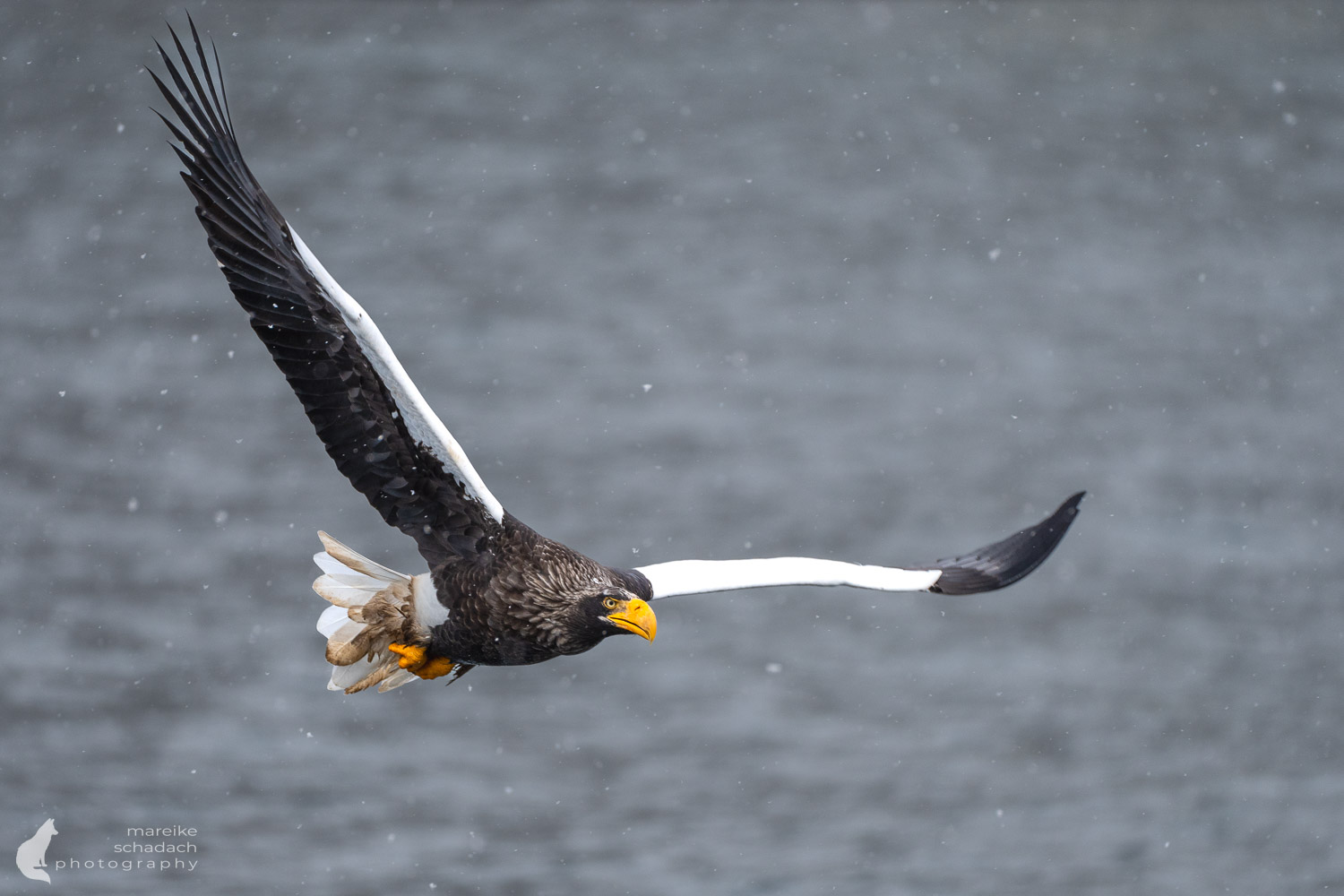
Mystical Ghost Trees
The dead trees that protrude from the swamps like ghost trees are particularly striking. This landscape gives the peninsula a mystical atmosphere. There are two places where you can clearly see the dead forest:
Todowara: The trail to Todowara starts right next to the Nature Center. First, a gravel path leads to a small toilet building. From there, a wooden boardwalk begins across the swamp to the dead trees. Todowara was once covered by dense forests of todomatsu (Sakhalin fir) and ezomatsu (Yezo spruce). The trees have died due to subsidence and erosion. What remains is an unreal landscape of individual dead trees that are slowly weathering and will sooner or later disappear.
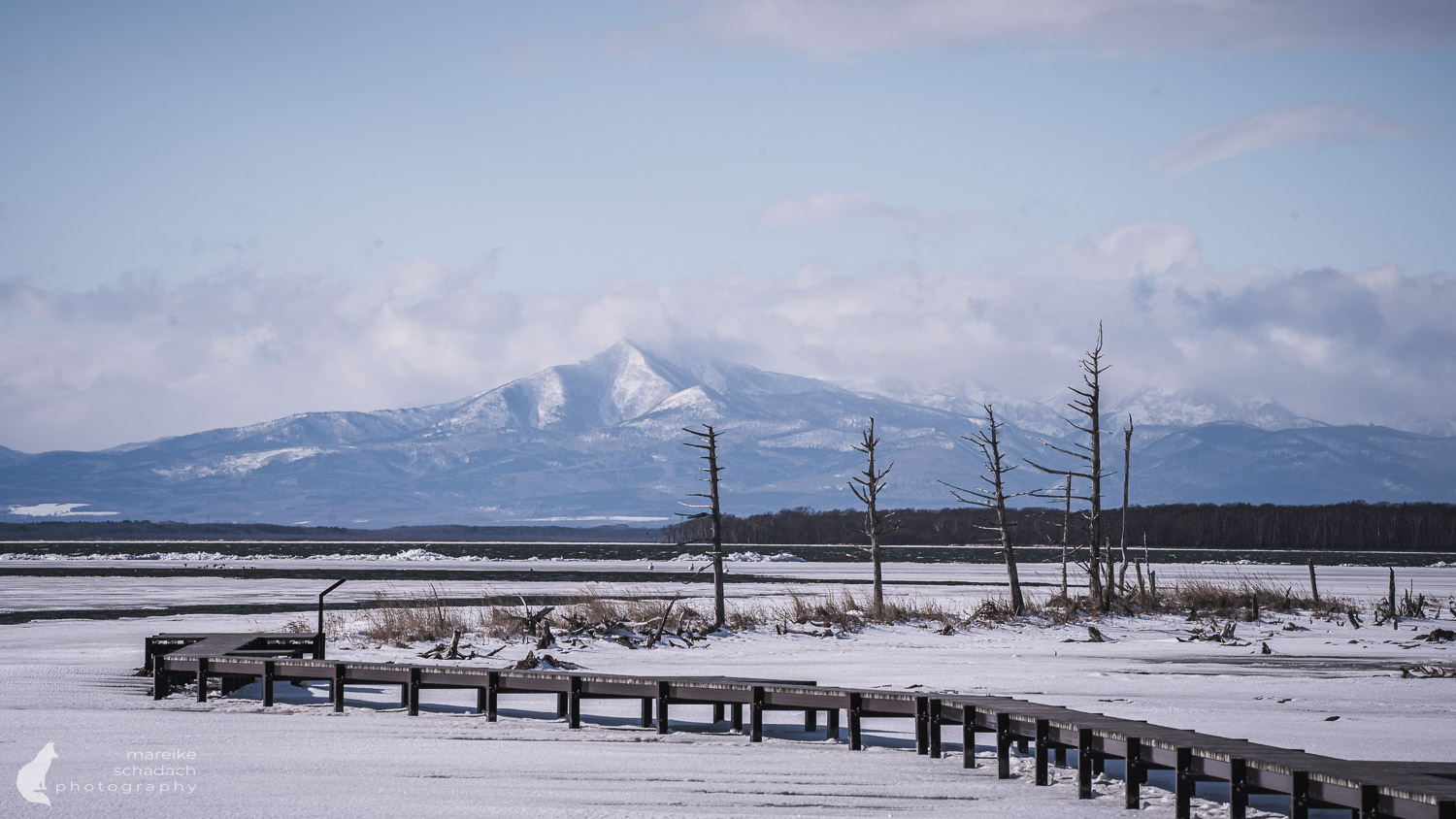
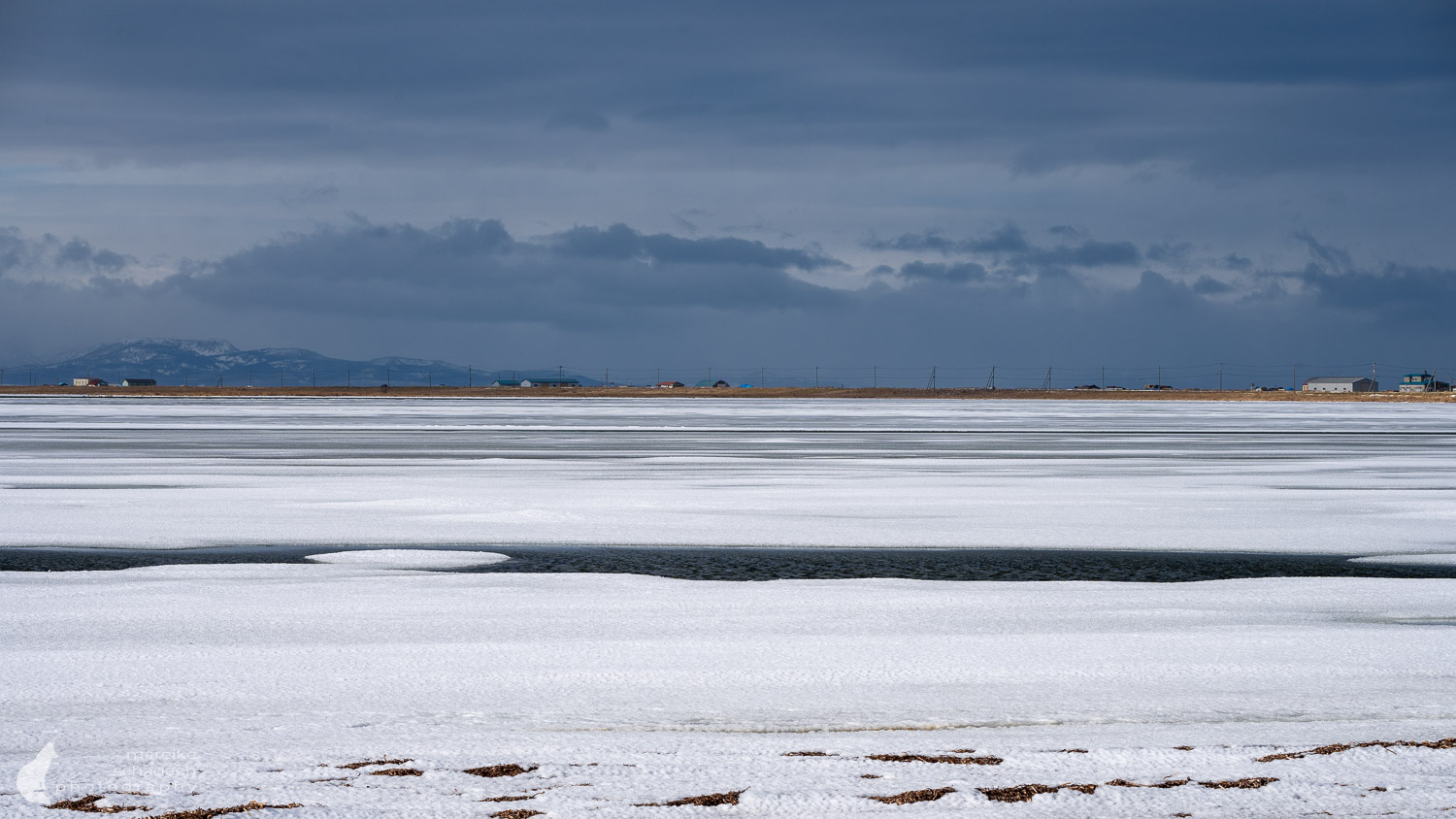
Narawara: Around the middle of the peninsula, you will see the Narawara forest, which consists of dead Mizunara oaks. The name Narawara comes from the Ainu word “Onnikuru”. This means “great forest”. Only remnants of the large forest remain today. There is a good view from the opposite bank. There is a small parking lot here. The mystical forest is particularly beautiful at sunset.
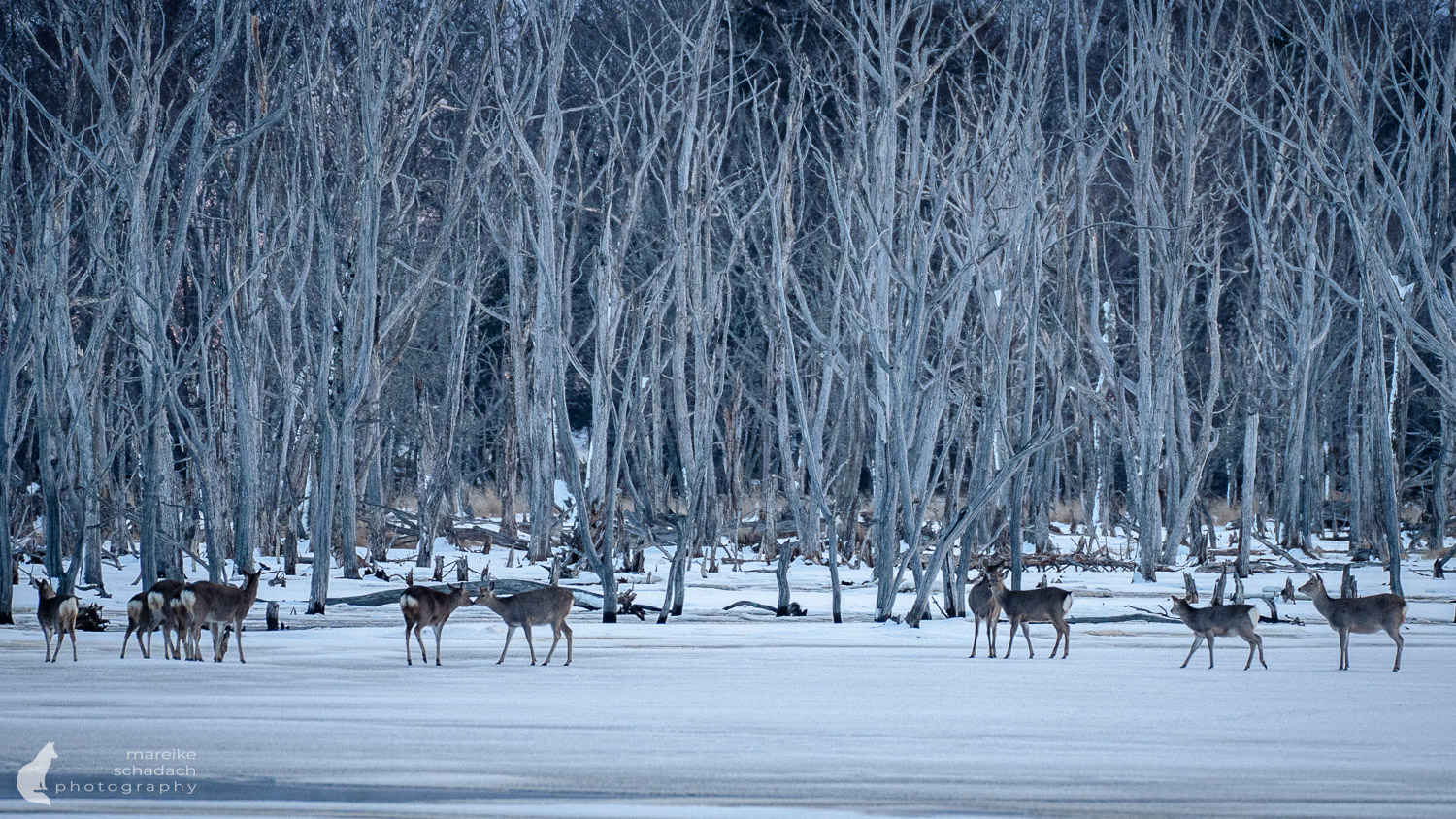
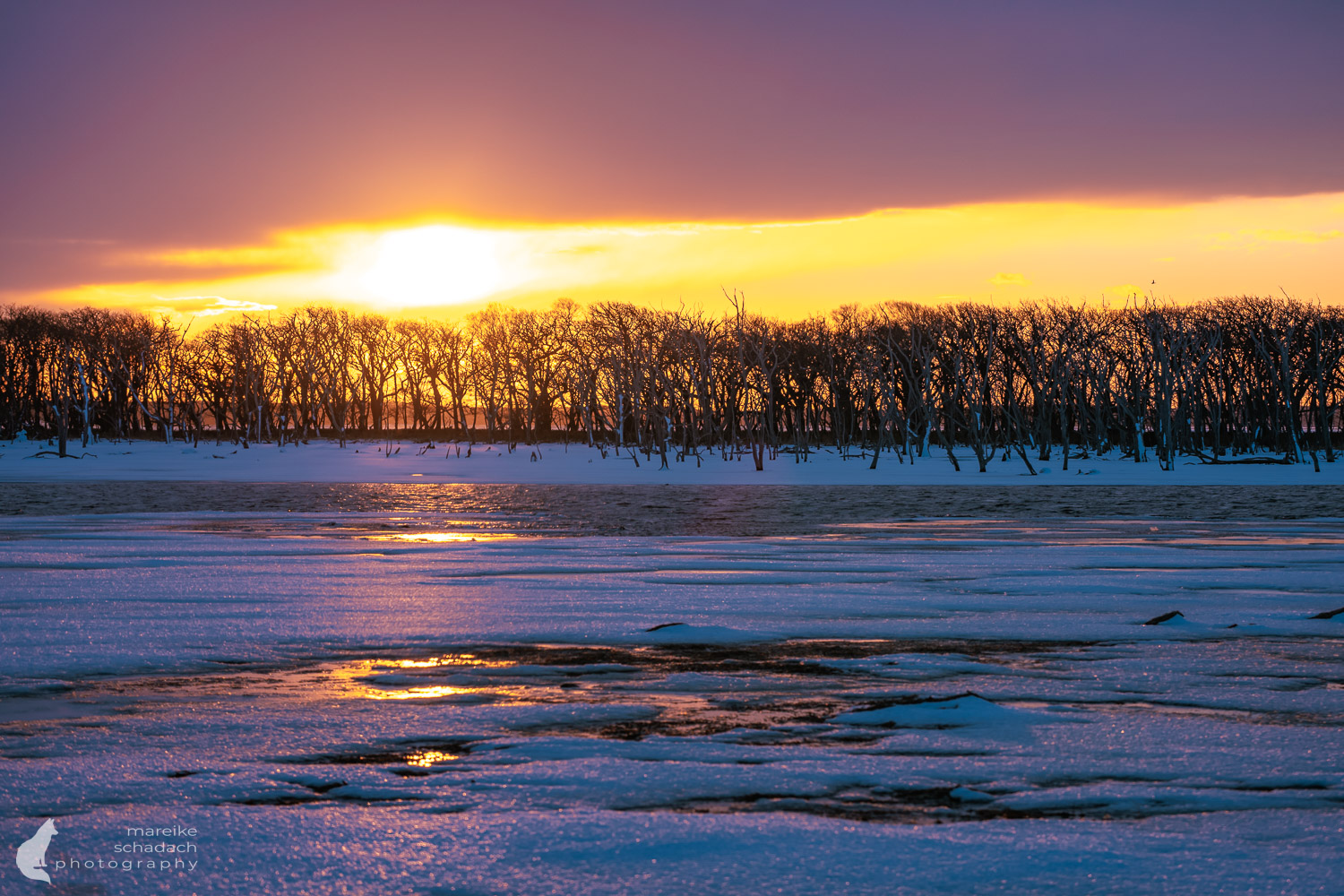
Birdwatching Hide on the Notsuke Peninsula
Just behind the lighthouse is a hide for birdwatching and photography. The windows face the bay and there is a small lake in front of it. The birdwatching hide is particularly interesting in summer. More than 250 bird species, including brent geese, waders and plovers, visit the area all year round. But a visit is also worthwhile in winter, as you have a beautiful view from here even without birds.
You can get to the birdwatching hide if you continue along the road from the Nature Center to the end. Just before the lighthouse, you can park your car in the Notsukezaki parking lot. From there, continue on foot for about 500 meters, as the rest of the gravel road is only accessible to fishermen.
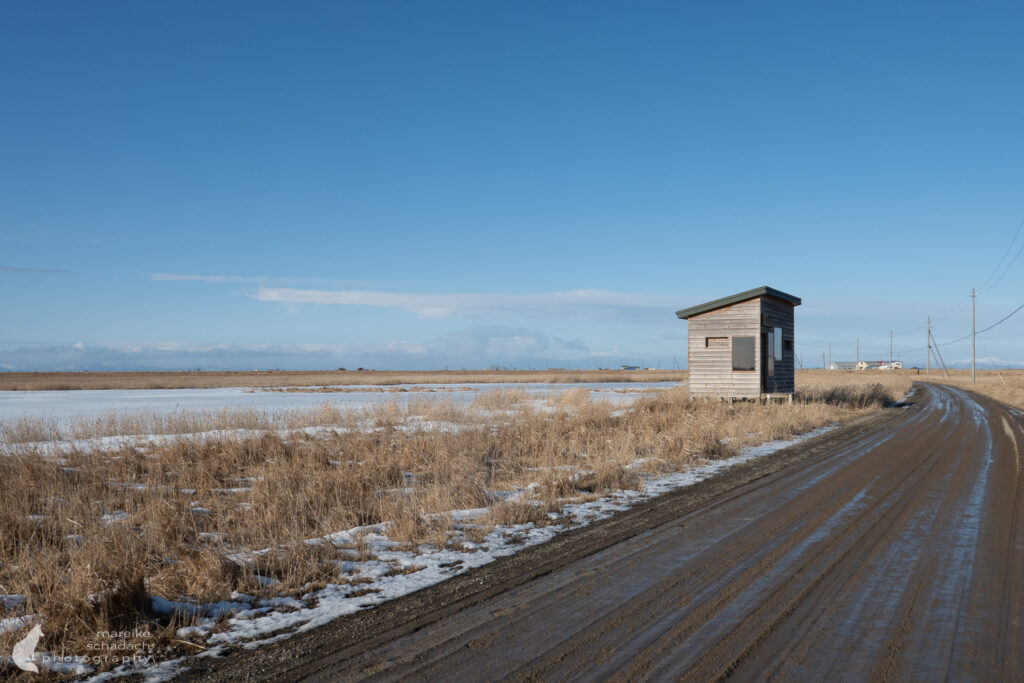
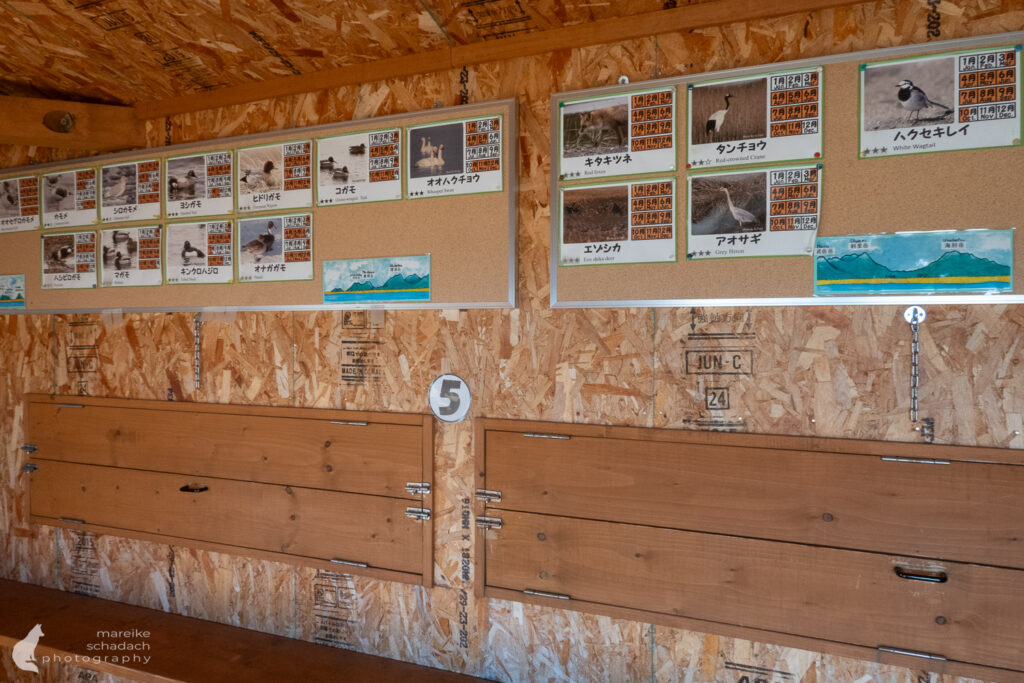

Tips for your Visit to the Notsuke Peninsula in Winter
Accommodation
The small fishing village of Odaito is located opposite the Notsuke Peninsula and is an ideal starting point. I can highly recommend the privately run Odaito Nest , which is just a 10-minute drive from the Notsuke Peninsula. The room was huge, especially by Japanese standards, and there was everything you need as a traveler, including a communal kitchen. Our host also gave us a very special experience with a clam breakfast. Click here to visit the host's website..

The best Time to Visit
December to February is ideal for snow lovers and wildlife spotting. From mid-February, drift ice can be seen on the sea. May to October are perfect for experiencing the Notsuke Peninsula in bloom.
Conservation
The Notsuke Peninsula is a nature reserve with restricted access. It is important that visitors adhere to the barriers and stay on designated paths. Wild animals should not be stalked or fed. Otherwise, wild animals, such as foxes, lose their natural fear of humans, approach cars and quickly become roadkill.
Earthquakes and Tsunamis
Earthquakes and tsunamis can occur in Japan. Along the coastal road and on the peninsula, signs warn of tsunamis and indicate escape routes. On the Notsuke Peninsula, there is an elevated shelter at the level of the Nature Center.
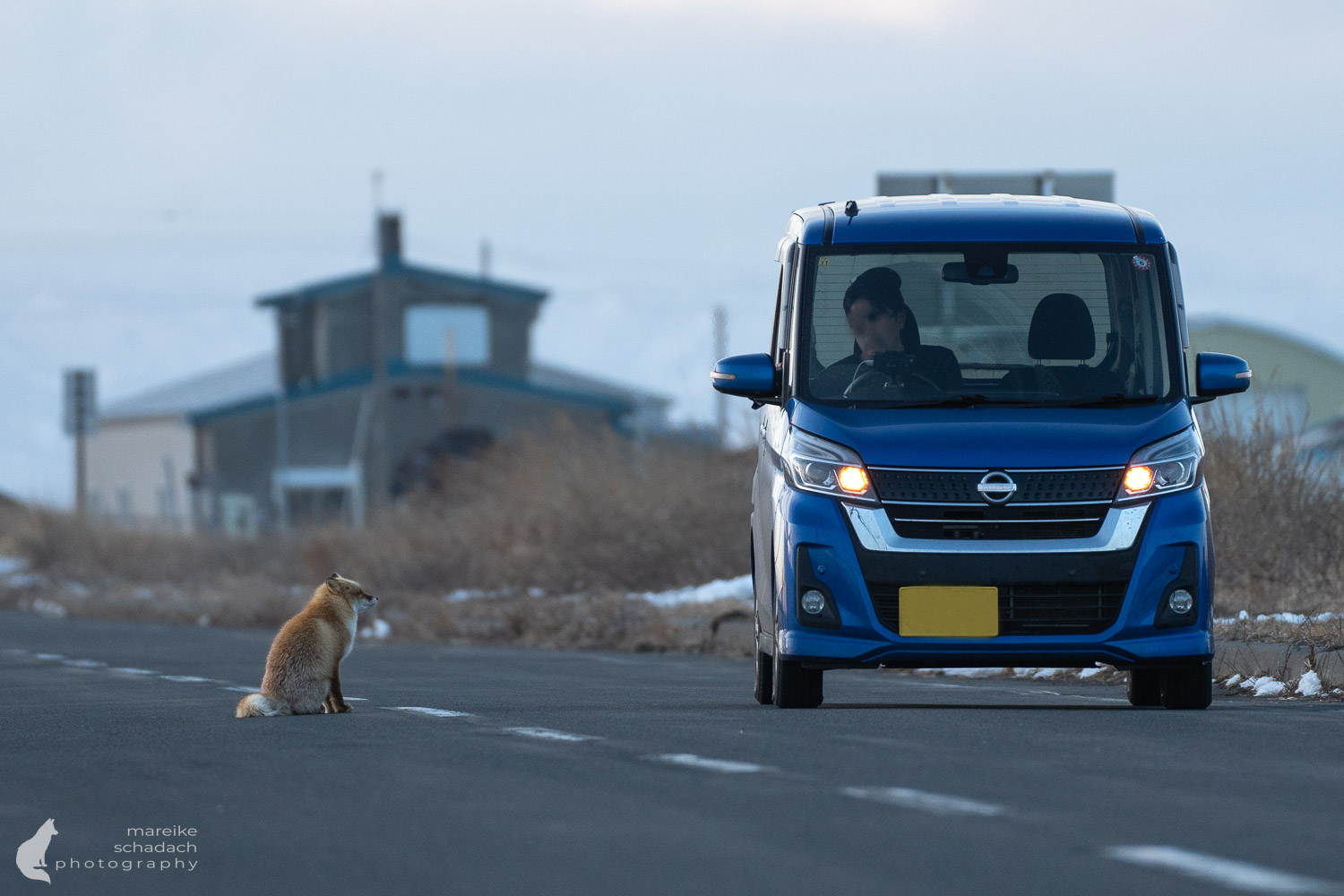
Book Recommendations for Hokkaido
You want to know where the journey goes? Then I can recommend these books*.
You can order the books with a click on the pictures on Amazon. If you buy a product via an affiliate link, I get a small commission, and you help me to keep filling Fernweh-Motive with interesting articles. The product will not be more expensive for you, and you will do me a huge favor.
Do you want to know when there are new articles on my blog? Then follow me on Facebook, Pinterest or Instagram. I would also be very happy if you share my article with your friends.
Recommendations for further Reading
Do you love remote places and lonely landscapes as much as I do? Then you might also be interested in my article about the Orkney Islands and my article Varanger Fjord: witches, street art and wildlife on the National Scenic Route.

